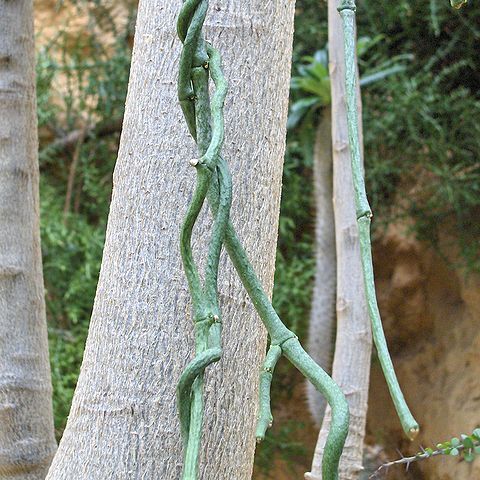Perennial subshrubs or vines; latex white. Roots fibrous. Leaves usually petiolate, sometimes greatly reduced and scale-like; colleters present or absent. Inflorescence sessile to pedunculate, umbelliform to racemose, with 1–many fascicles. Corolla rotate or campanulate; tube cylindrical; lobes free at tips, valvate. Annular corona present or absent; corolline corona absent; gynostegial corona of connate ring of staminal and interstaminal parts and 5 proximal staminal corona parts basally adnate to this ring. Stamens connate into gynostegium, not markedly capitate. Anthers 2-locular with terminal appendage; pollen in linear tetrads; pollinaria with 2 pendulous, ellipsoidal pollinia without pellucid germinating mouth; corpusculum oblong; caudicles unwinged, not geniculate. Style-head flat-topped to umbonate. Follicles fusiform. Seeds flattened, ovate, comose at micropylar end.
Usually scandent herbs, sometimes suffrutescent, glabrous or pubescent. Leaves opposite, coriaceous to membranaceous, frequently small and narrow. In-florescences umbelliform or racemiform, sessile or pedunculate. Flowers with the calyx deeply 5-lobed, generally 5-glandular at the base within, the lobes often obtuse and small; corolla mostly whitish or yellowish, occasionally pink to brownish-purple, urceolate to campanulate to subrotate, usually small, 5-lobate, the lobes often pubescent within; stamens 5, the corona mostly of 5 distinct or connate segments, laminate to filiform, sometimes fleshy and minute, rarely absent, sometimes variously compound or with internal processes, the filaments
connate into a short to elongate tube, the anthers terminated by an inflexed membrane; pollinia usually ovoid or oblong, pendulous; stigma apically flat or variously elaborated into a beak. Fruit single or paired follicles, smooth, usually terete or nearly so, commonly slender and acuminate, sometimes ovoid.

